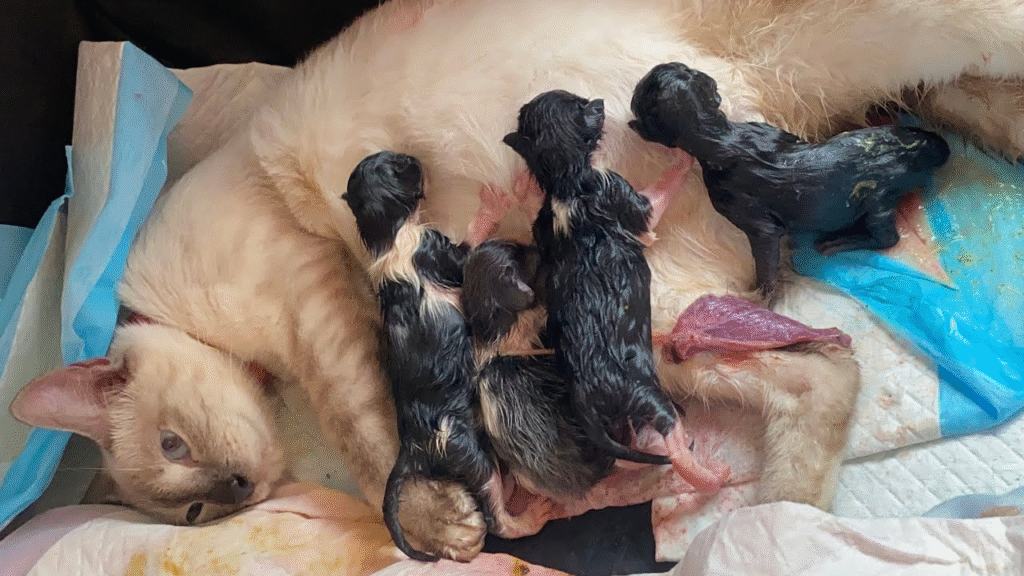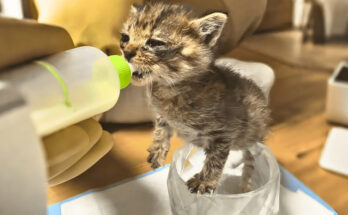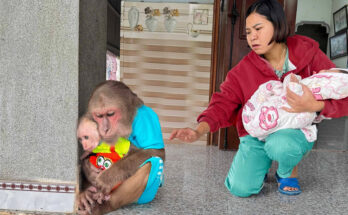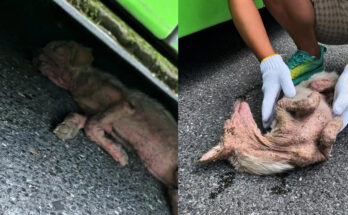The miracle of life is always incredible to witness, and when it comes to our feline companions, it’s nothing short of amazing. A mother cat, often called a queen, goes through labor with quiet strength and instinctive grace. Even though it can look overwhelming, this is a natural process that has been happening for thousands of years without human intervention.
When labor begins, the cat usually seeks out a safe, quiet, and comfortable place to give birth. It might be a box lined with soft blankets, a secluded corner, or anywhere she feels secure. Her instincts guide her as the contractions start. The process can take several hours, with kittens arriving one by one. Each kitten is born enclosed in a thin membrane, which the mother carefully licks away to free her newborn so it can take its first breath.
Immediately after birth, the kittens are tiny, wet, and fragile, but they instinctively know to crawl toward their mother for warmth and milk. The queen encourages this by nudging them gently, ensuring they latch on and begin nursing. Nursing so soon after birth provides them with colostrum, a nutrient-rich first milk that helps build their immune system.
Although the scene may appear messy, every step has a purpose. The mother cat often eats the placentas, which is a natural behavior that gives her nourishment and keeps the birthing area clean. It’s a part of the cycle that humans sometimes find surprising but is perfectly normal.
As the hours pass, the kittens dry off, their fur fluffs up, and they settle into a warm pile against their mother. She keeps a watchful eye, cleaning and comforting each one. Despite the exhaustion, her instincts keep her attentive and protective.
Witnessing a cat giving birth is a reminder of the quiet resilience and nurturing nature of animals. It’s both tender and powerful—a moment where new life begins, and a mother’s role blossoms instantly.



